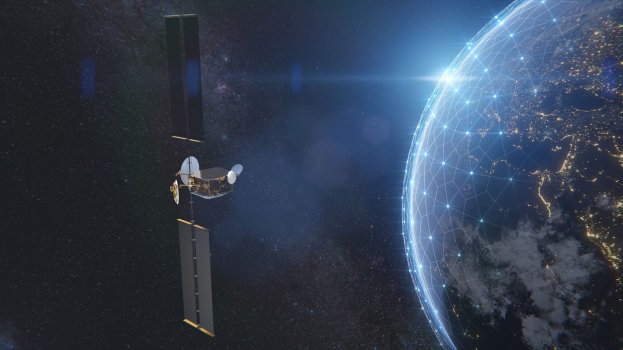K
Kathleen Martin
Guest
Research from satellite telecoms giant Inmarsat highlights the factors driving IoT adoption in addition to what is hampering successful deployments.
Over half (54%) of respondents said that cost-efficiency is their leading reason for adopting IoT technologies. This was followed by environmental sustainability and greater supply chain insight—both at 48 percent.
Organisations with a formal IoT strategy are reaping the most benefits in terms of those leading drivers of improving cost-efficiencies and sustainability.
Without a formal IoT strategy in place, 52 percent felt their investments met or surpassed their expectations for cost-efficiencies and 53 percent for environmental sustainability. With a formal IoT strategy, that increased considerably to 73 percent and 71 percent respectively.
“The efficiency gains and cost savings IoT can deliver, in addition to the huge environmental benefits, paints a clear picture as to why most organisations are pursuing IoT,” said Mike Carter, President of Inmarsat Enterprise.
In terms of barriers, a lack of in-house skills (37%) was listed as the main obstacle in a new IoT deployment. This problem is particularly acute in organisations without a formal IoT strategy in place as 47 percent of this group continue to struggle post-deployment from a lack of skills. This drops by more than half to 21 percent in organisations with a formal IoT strategy.
The next major barrier was a lack of reliable connectivity (24%).
“To get the optimum benefits from their IoT deployments, organisations must ensure they have all the right skillsets and connectivity requirements in place. The research shows that organisations struggling to implement the right connectivity strategies are lagging behind their peers, and those with a formal IoT strategy are better placed to reap the benefits of optimised and more sustainable operations,” adds Carter.
“We can see that too many businesses still struggle to deploy IoT projects due to unreliable, insecure, or poor connectivity. This is where satellite IoT connectivity can play a key role. Some of the most valuable data often hails from the hardest to reach places, so investing in effective collection, storage and analysis of that data is crucial to successful IoT strategies.
Organisations that aren’t struggling from connectivity problems are, understandably, finding more success from their IoT deployments. However, 25 percent report suffering from a lack of consistent and reliable connectivity post-deployment.
Continue reading: https://iottechnews.com/news/2022/apr/22/inmarsat-reveals-drivers-and-challenges-of-iot-deployments/
Over half (54%) of respondents said that cost-efficiency is their leading reason for adopting IoT technologies. This was followed by environmental sustainability and greater supply chain insight—both at 48 percent.
Organisations with a formal IoT strategy are reaping the most benefits in terms of those leading drivers of improving cost-efficiencies and sustainability.
Without a formal IoT strategy in place, 52 percent felt their investments met or surpassed their expectations for cost-efficiencies and 53 percent for environmental sustainability. With a formal IoT strategy, that increased considerably to 73 percent and 71 percent respectively.
“The efficiency gains and cost savings IoT can deliver, in addition to the huge environmental benefits, paints a clear picture as to why most organisations are pursuing IoT,” said Mike Carter, President of Inmarsat Enterprise.
In terms of barriers, a lack of in-house skills (37%) was listed as the main obstacle in a new IoT deployment. This problem is particularly acute in organisations without a formal IoT strategy in place as 47 percent of this group continue to struggle post-deployment from a lack of skills. This drops by more than half to 21 percent in organisations with a formal IoT strategy.
The next major barrier was a lack of reliable connectivity (24%).
“To get the optimum benefits from their IoT deployments, organisations must ensure they have all the right skillsets and connectivity requirements in place. The research shows that organisations struggling to implement the right connectivity strategies are lagging behind their peers, and those with a formal IoT strategy are better placed to reap the benefits of optimised and more sustainable operations,” adds Carter.
“We can see that too many businesses still struggle to deploy IoT projects due to unreliable, insecure, or poor connectivity. This is where satellite IoT connectivity can play a key role. Some of the most valuable data often hails from the hardest to reach places, so investing in effective collection, storage and analysis of that data is crucial to successful IoT strategies.
Organisations that aren’t struggling from connectivity problems are, understandably, finding more success from their IoT deployments. However, 25 percent report suffering from a lack of consistent and reliable connectivity post-deployment.
Continue reading: https://iottechnews.com/news/2022/apr/22/inmarsat-reveals-drivers-and-challenges-of-iot-deployments/

